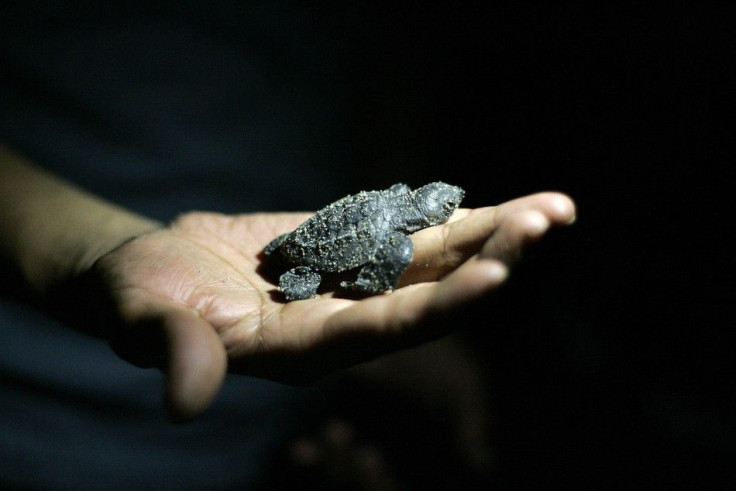Stationary Camera Captures Crocodile Cracking Open A Turtle's Shell In Australia

A dead Olive Ridley also known as the Pacific Ridley Sea turtle, an endangered species, was seen on the coastline of the Cobourg Peninsula in the Northern Territory. A local park ranger, Dani Best, had set up a stationary wildlife-monitoring camera for the purpose of looking at will happen to the turtle. The turtle had washed up after it was caught and killed by a fishing net. Best then cut the turtle free and then left it on the sand in a national park called the Garig Gunak Barlu National Park, 216 kilometers north of Darwin.
The camera recorded footage of the turtle as well as what happened to the turtle. The camera captured images of the shell of a turtle being cracked open by a saltwater crocodile, the largest of all living reptiles.
Many animals had tried to feed on the turtle before the crocodile arrived. The crocodile was seen approaching the turtle and then smashing the shell of the turtle, which resulted in the debris flying while the crocodile tried to reach for the meat inside the shell. The details of the attack was released by the Northern Territory Parks and Wildlife.
Yahoo! News UK stated that the crocodile had demonstrated a T-rex style bite. The owner of the Crocodylys Park, a reptile zoo in Darwin, Grahame Webb, said that the bite of the crocodiles could apply pressure of about three tons, which is about 7,700 psi or 3,600 pounds per square inch. He explained that no other animal had the bite force like the crocodile. The bite force of the crocodile is about times as powerful as that of a lion and 25 times more powerful than that of humans.
In a study by scientists at the Charles Darwin University, it was found that the saltwater crocodiles, also known as estuarine or the Indo-Pacific crocodiles, had made 99 attacks in Australia in a span of 42 years between 1971 and 2013. A quarter of the attacks were fatal. it was also found that, in recent years, the number of attacks had taken a hike.




















